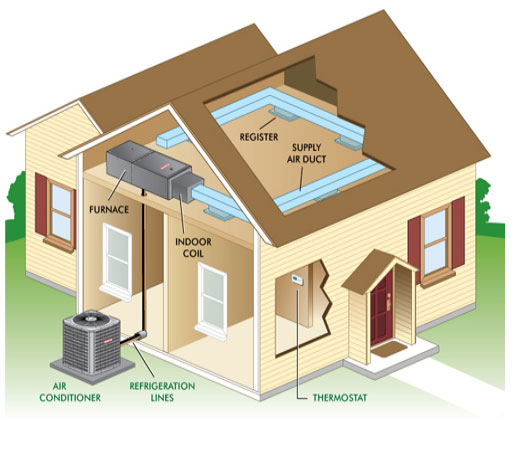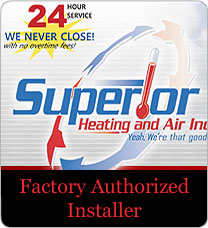Heating & Cooling 101

Heating and cooling are two of the most important factors of your home and are critical to your comfort.
You may hear the term "HVAC" when researching your new system. The acronym stands for Heating, Ventilation and Air Conditioning — the three functions of a home system. They control air temperature, humidity, and the quality of the air in your home.
If you have a heat pump it works like this:
- Using electricity as its energy source, heat pumps are used for either the heating or cooling of your home by transferring heat between two reservoirs.
- In the warmer months, the heat pump acts like an air conditioner, removing heat from the air inside your home and transferring it outside.
- During colder months, heat from outdoor air is extracted and transferred to the interior of your home. Believe it or not, even a 32º Fahrenheit day produces enough heat to warm a home via a heat pump.
Benefits
- Year-round, energy-efficient indoor comfort for moderate climates - A central heat pump helps maintain comfortable temperatures inside your home and reduces humidity levels year-round. Homes located in regions with severely cold temperatures may either require supplemental heating or be better served with an air conditioner/furnace combination.
- Cleaner air - As your heat pump system draws air out of various rooms in the house through return air ducts, the air is pulled through an air filter, which removes airborne particles such as dust and lint. Sophisticated filters may remove microscopic pollutants, as well. The filtered air is then routed to air supply duct work that carries it back to rooms. Whenever the air conditioner is running, this cycle repeats continually, constantly filtering and cleaning the air in your home.
- Quieter operation - Because the compressor bearing unit of the typical central heat pump system is located outside the home, the indoor noise level from its operation is much lower than that of a free-standing air conditioning unit.
- A furnace works to keep a home warm in the winter and plays a critical part in the operation of an air conditioning system.
- Furnaces produce heat through the combustion of natural gas in the furnace's burner. The heat produced from this process then passes through a heat exchanger. Air from your home's return air ducts is blown over the heat exchanger, thus warming the air.
- The furnace's blower then blows the warmed air into the duct work, which carries and disperses the warmed air throughout the home.
- During warmer months, the blower inside a furnace continues to circulate return air throughout the home--only this time, the return air has been cooled by being blown over the indoor coil portion of the home's split-system air conditioning system. The evaporator coil is typically installed downstream of the furnace.
If you have a Furnace it works like this:
Benefits
- Indoor warmth any time it is required.
- Energy efficiency -The efficiency of a furnace can be determined by its AFUE--or Annual Fuel Utilization Efficiency. The minimum efficiency level for furnaces currently manufactured in the U.S. is 80% AFUE. A rating of "80% AFUE" means that for every dollar you spend heating your home; 80 cents are actually applied to the generation of warmth. Compared to many of the 60% AFUE furnaces in older homes, 80% AFUE furnaces are a significant improvement. However, for enhanced energy efficiency, you may wish to consider a 95% AFUE furnace, such as Superior Air’s line of 95% AFUE Furnaces.
- Cleaner air - As your HVAC system draws air out of various rooms in the house through return air ducts, the air is pulled through an air filter, which removes airborne particles such as dust and lint. Sophisticated filters may remove microscopic pollutants, as well. The filtered air is then routed to air supply duct work that carries it back to rooms. Whenever the HVAC system is running, this cycle repeats continually, constantly filtering and cleaning the air in your home.
- This cleaning process improves with the installation of a variable-speed furnace. Variable-speed furnaces use variable-speed blowers, which shift between several speeds. These furnaces will run longer at a low speed, which causes them to filter the indoor air more frequently.
- And remember - because the furnace plays an important role in the operation of the air conditioner, its variable-speed blower helps maintain both a consistent indoor temperature and improved air quality year-round.






